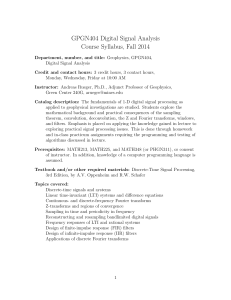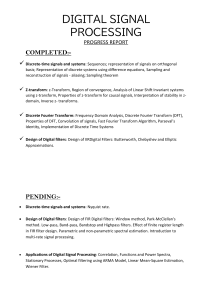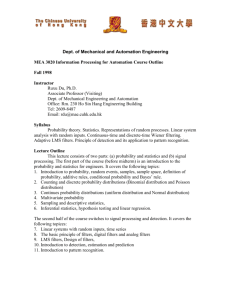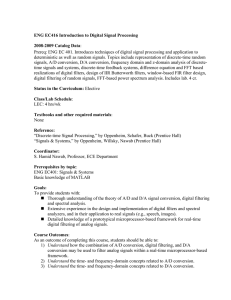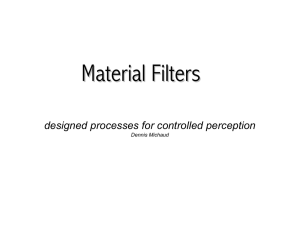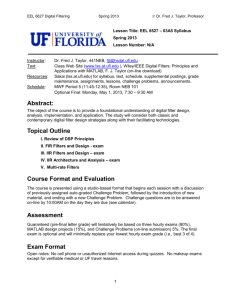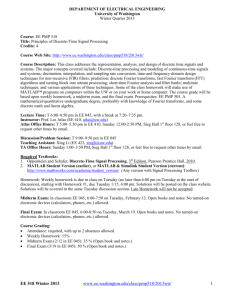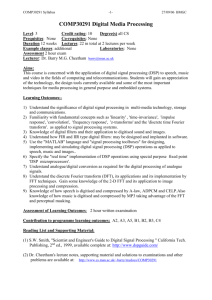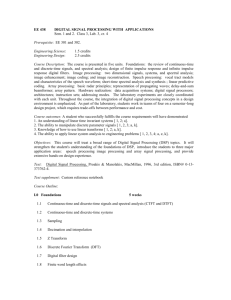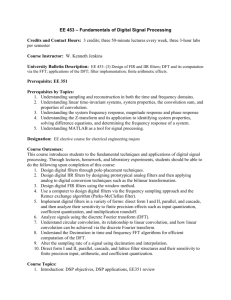An Introduction to Random Signals, Noise, and Digital Signal
advertisement
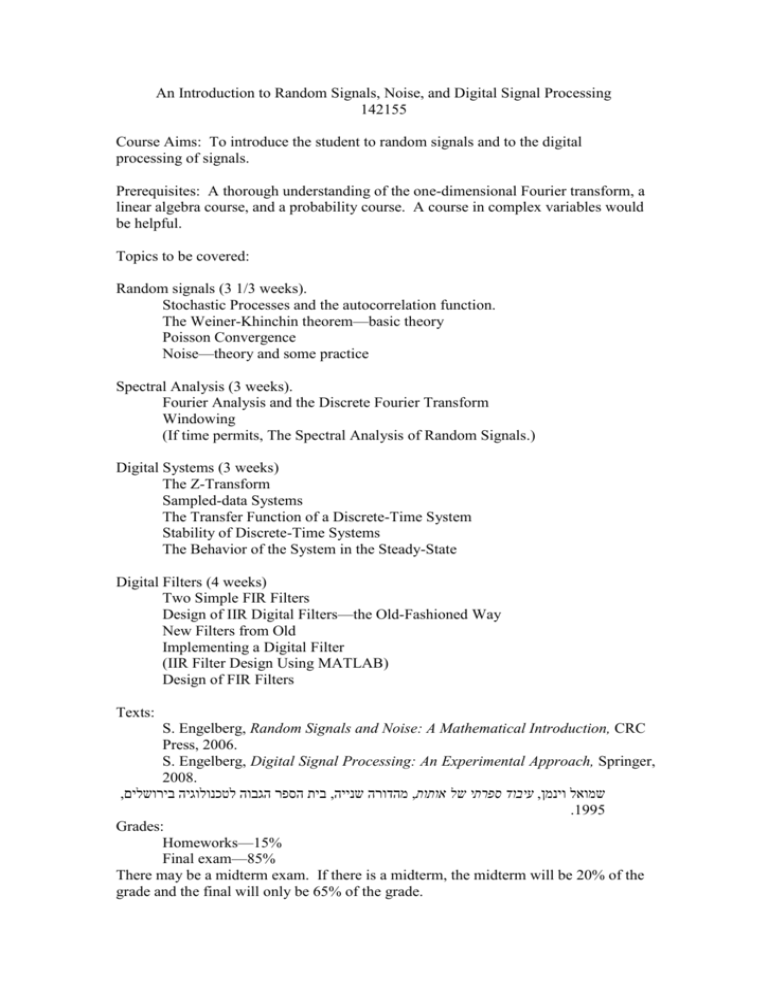
An Introduction to Random Signals, Noise, and Digital Signal Processing 142155 Course Aims: To introduce the student to random signals and to the digital processing of signals. Prerequisites: A thorough understanding of the one-dimensional Fourier transform, a linear algebra course, and a probability course. A course in complex variables would be helpful. Topics to be covered: Random signals (3 1/3 weeks). Stochastic Processes and the autocorrelation function. The Weiner-Khinchin theorem—basic theory Poisson Convergence Noise—theory and some practice Spectral Analysis (3 weeks). Fourier Analysis and the Discrete Fourier Transform Windowing (If time permits, The Spectral Analysis of Random Signals.) Digital Systems (3 weeks) The Z-Transform Sampled-data Systems The Transfer Function of a Discrete-Time System Stability of Discrete-Time Systems The Behavior of the System in the Steady-State Digital Filters (4 weeks) Two Simple FIR Filters Design of IIR Digital Filters—the Old-Fashioned Way New Filters from Old Implementing a Digital Filter (IIR Filter Design Using MATLAB) Design of FIR Filters Texts: S. Engelberg, Random Signals and Noise: A Mathematical Introduction, CRC Press, 2006. S. Engelberg, Digital Signal Processing: An Experimental Approach, Springer, 2008. , בית הספר הגבוה לטכנולוגיה בירושלים, מהדורה שנייה, עיבוד ספרתי של אותות,שמואל וינמן .5991 Grades: Homeworks—15% Final exam—85% There may be a midterm exam. If there is a midterm, the midterm will be 20% of the grade and the final will only be 65% of the grade.
